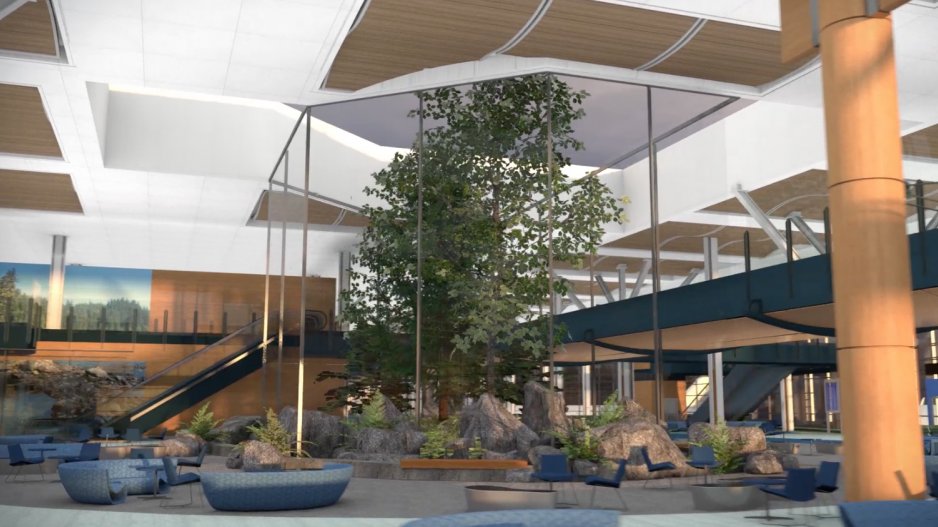The Vancouver Airport Authority (VAA) has revealed a 20-year, $5.6-billion plan to upgrade its Vancouver International Airport (YVR).
Its wide-ranging plan forecasts 75 major projects with much of the money going toward a set of extensions to five arms that branch off the main terminal.
No government funding is anticipated for the expansions, said VAA CEO Craig Richmond.
Instead, Richmond said that the VAA will likely accumulate up to $2 billion in debt, using its AA credit rating.
The Airport Improvement Fee (AIF) is a likely source of revenue for the expansions. At $20 for an international flight, YVR’s AIF is lower than other major airports in Canada, he said.
“Calgary’s [AIF] is $30,” he said.
“We’ll have to look at [raising the AIF] in the next few years but we haven’t decided on that yet.”
Revenue from the successful outdoor outlet mall east of the airport will also contribute to the VAA’s expansion plans. The VAA runs that mall in partnership with McArthurGlen.
Richmond said no date has yet been set to break ground on a second phase for that shopping destination. Construction on that second phase was originally supposed to launch this spring.
Other sources of terminal-expansion funding will likely come from developing other parcels of the VAA’s land on Sea Island and creating new technology that can be sold to other airports, Richmond said.
Work on the terminal expansions is set to start within the year with the first completion likely to be at Pier D, which is the international terminal, he added.
“You’ll see a four-gate expansion because, quite frankly, we’re running out of space for international carriers,” he told Business in Vancouver after a January 18 speech to the Vancouver Board of Trade.
“We’ll do [international-terminal expansion] in two chunks. First would be four [gates] and then, when that’s done, and a few years later, another four gates. That helps us stay incremental in case something changes and, let’s say, there’s another recession.”
BIV reported in 2015 on the controversy surrounding the VAA expanding YVR's terminals and the various proposals it was considering
Richmond, on January 18, outlined different options for future runway construction but he said that the plan is not to build any new runways in the next 20 years but that he raised the issue simply to address possibilities.
New runways are not as important as new terminals because planes are getting bigger and the number of takeoffs and landings is expected to rise much slower than passenger growth.
Richmond expects that YVR passenger counts will expand to 25 million by 2020, up from 22.3 million in 2016.
The airport is running at 88% capacity and, by 2020, he expects that it will be running at 100% capacity.
That is why the terminal expansions are necessary, he said.
The VAA considered 57 terminal-expansion options and those proposals fell into three main categories. One set of options involved expanding west, likely via a tunnel or shuttle to a new multi-armed terminal. A second set of options involved expanding YVR east from around the Canada Line Skytrain station to a new terminal somewhere toward the outlet mall. The terminal-expansion option that was selected involves expanding the airport in five separate directions and has the advantage, according to Richmond, of keeping the airport essentially one large terminal.
It was unclear exactly how many new gates will be added after the five branches of the airport are extended.
Some of the other projects anticipated in the next two decades include:
•a second parkade;
•potentially a new geothermal plant; and
•additional parallel taxiways and a north-south taxiway that would enable planes to taxi over Grant McConachie Way and the Canada Line.




